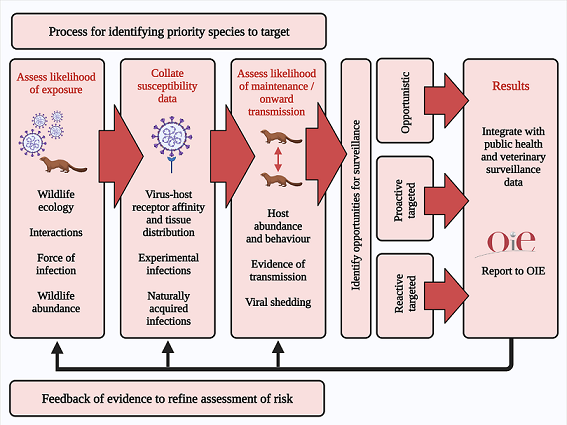The novel coronavirus SARS-CoV-2 likely emerged from a wildlife source with transmission to humans followed by rapid geographic spread throughout the globe and severe impacts on both human health and the global economy. Since the onset of the pandemic, there have been many instances of human-to-animal transmission involving companion, farmed and zoo animals, and limited evidence for spread into free-living wildlife. The establishment of reservoirs of infection in wild animals would create significant challenges to infection control in humans and could pose a threat to the welfare and conservation status of wildlife. We discuss the potential for exposure, onward transmission and persistence of SARS-CoV-2 in an initial selection of wild mammals (bats, canids, felids, mustelids, great apes, rodents and cervids). Dynamic risk assessment and targeted surveillance are important tools for the early detection of infection in wildlife, and here we describe a framework for collating and synthesising emerging information to inform targeted surveillance for SARS-CoV-2 in wildlife. Surveillance efforts should be integrated with information from public and veterinary health initiatives to provide insights into the potential role of wild mammals in the epidemiology of SARS-CoV-2.

